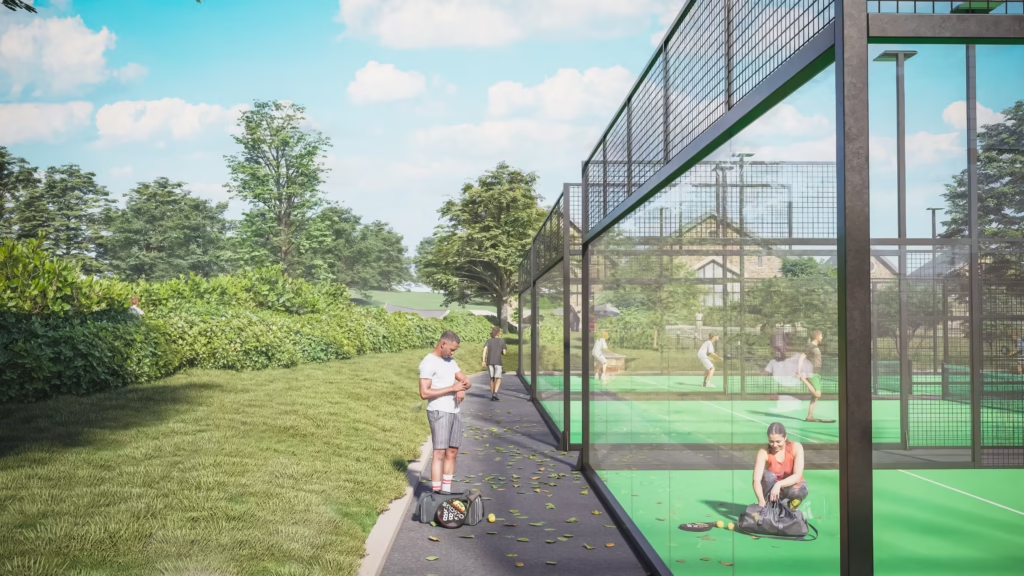At Padel Court Design, we believe in more than building courts — we believe in building movement, momentum and community. And right now, there’s no sport in the UK growing faster than padel.
Here’s how padel has gone from niche to one of Britain’s most exciting sporting upstarts — and why that makes this an especially thrilling time for anyone involved in designing, building, managing or playing padel.
A Surge in Participation
According to the Lawn Tennis Association (LTA), by the end of 2024, just over 400,000 adults and juniors in Great Britain had played padel at least once in the previous 12 months.
This number has jumped dramatically over a short period. For context: it was about 15,000 in 2019, rose to ~89,000 in 2021, ~129,000 by end-2023.
The more regular players are rising too: Sport England’s “Active Lives” survey shows the number of adults playing padel twice a month doubled from ~23,000 in 2022‐23 to ~51,000 in 2023-24.
Courts & Infrastructure — Building Out the Game
There are now 893 courts across 300 venues in Britain.
The LTA has invested more than £6 million into padel growth (as of early 2025), including ~£4.5 million aimed at building 80 new courts at 42 venues. That’s nearly 10% of all courts in the country.
Planning applications for padel facilities are rising steeply. Data shows big year-on-year growth in the number of applications (courts, clubs) from local planning authorities
Awareness, Potential & Community
Where Tennis Comes In — Compliment, Not Competition
While tennis is still larger in terms of historic infrastructure and participation, padel is increasingly seen not as a threat but as a complement. Many tennis clubs are adding padel courts to unused or under-utilised tennis surfaces, or converting old or less used courts. This allows them to modernise, meet demand, and bring in new revenue while keeping their core tennis offerings. The Guardian+1
The Lawn Tennis Association, which now governs both sports, has been careful to champion padel growth but also ensure it doesn’t cannibalise tennis participation. They are monitoring, guiding, and helping with planning and management so both sports can thrive.
Why Now? What’s Driving the Growth
Some of the key forces pushing this rapid growth:
- Social appeal — Padel’s format (doubles, smaller court, use of walls) and its communal, social nature make it more accessible for people who haven’t played racquet sports before.
- Lower effective land/space demands — compared to full-sized tennis courts. Plus, indoor/covered courts can stretch play into all seasons, which is crucial given UK weather.
- Investment support — from the LTA and other public and private sources, helping with planning, courts, and outreach.
- Desire for novel, fun sport options — whether for fitness, socializing, or leisure. People want sport experiences that combine physical activity with social time, and padel hits that sweet spot.
What This Means for Padel Court Design
As a specialist in designing, planning & constructing padel facilities, the current climate offers both great opportunity and challenges. Here are some thoughts:
- Site Feasibility & Planning: More landowners, local authorities, clubs want padel courts. But finding the right site (access, planning constraints, parking, utilities) is still one of the biggest hurdles. Good design from the start is crucial.
- Indoor vs Outdoor: Outdoor courts are cheaper, but usage drops with bad weather unless cover or canopy solutions are built. Indoor courts tend to get much better year-round usage, though costlier. At Padel Court Design we see many projects costing more up front but yielding stronger returns.
- Community and Social Spaces: Since padel isn’t just about match play — it’s social — design should embed cafés, spectator areas, lounges, flexible spaces.
- Durability & Quality: With courts being used a lot (both by serious players and casual ones), material choice, quality of glass walls, flooring, lighting etc., are key to longevity and cost of maintenance. Good design invests here.
- Regulation & Approval: Building regulations, local planning, environmental impact, noise issues — all can slow or block projects. Having a design & planning partner with experience helps smooth these paths.
Can Padel Eclipse Tennis in the UK?
This is a question many people (including media, players, and professionals) are asking. From what we see:
- It’s unlikely that padel will “replace” tennis any time soon — tennis has decades of established infrastructure, tradition, clubs, coaches, national & international tournaments, etc.
- But padel can eclipse tennis in certain metrics (participation growth, number of new facilities, cultural appeal especially among younger or social players). Already, in raw growth percentage terms, padel is leaps ahead.
- If the trend continues — especially with investment, good design & governance — padel might outpace tennis in growth rate and popularity in many regions. It may well become one of the biggest racket sports in the UK.

Looking Ahead
As 2025 (and beyond) unfolds, here’s what might define the next phase:
- More indoor / covered courts to allow year-round play.
- Greater integration with schools and community programmes.
- More tournaments, league structures, maybe more media coverage.
- Continued focus on quality of design, sustainability, community engagement.
- Possibly, padel courts becoming regular features in leisure centres, gyms, hotels, mixed-use developments.
Conclusion
Padel is no longer just an up-and-coming sport in the UK. It’s here, growing fast, and creating real opportunities — for players, investors, designers, clubs, and communities alike. At Padel Court Design, we’re excited to be part of that journey: providing expert, design-led solutions that help courts not only get built, but thrive.
If you’re considering building a court (or several), revitalising an existing one, or simply want to understand how best to make a padel facility that lasts, works and inspires — drop us a line. Let’s build the future of padel together.






